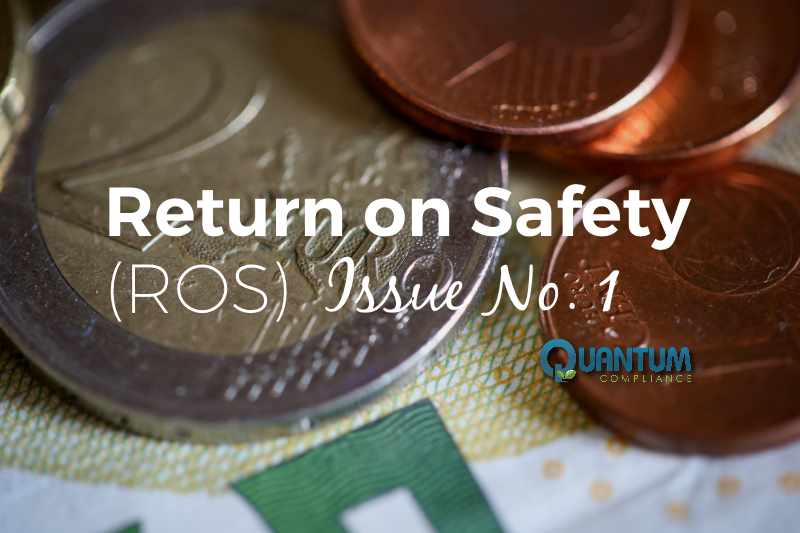 To raise safety awareness and help safety professionals advocate improving corporate safety practices, Quantum will embark on a series of articles entitled Return on Safety (ROS). In these articles we will discuss the value that a strong safety program offers to a company. Additionally, we will cover
To raise safety awareness and help safety professionals advocate improving corporate safety practices, Quantum will embark on a series of articles entitled Return on Safety (ROS). In these articles we will discuss the value that a strong safety program offers to a company. Additionally, we will cover
- Common problems faced when communicating the value of safety to the rest of the company
- Bridging the gap between safety professionals and decision makers
- Methods and metrics for measuring safety improvements
- Safety success stories and more
The goal of these articles is to illustrate the full value a strong safety program can offer as well as how safety professionals can effectively communicate this value to company decision makers.
Return on Safety: It’s Not a Cliché!
Safety professionals inherently recognize the business value added by maintaining strong safety and health practices. Transmitting this message to the rest of the company is not always the easiest task. Senior executives of a company are largely driven by their bottom line. Data and metrics are the foundation of any decision to be made. Their attention is then focused on the following categories
- Cost
- Revenue
- Quality
- Risk
- Time
- Delivery
So how does safety fit into this picture? Simple. Safety affects every category listed above. More often than not, it isn’t that senior executives don’t value workplace safety, it’s that they don’t see how safety plays into these categories. As the success of a safety program rests upon safety professionals in an organization, it is the job of the safety professional to help senior executives understand safety from another perspective.
Return on Safety: How Do I Increase it?
There is good news, however. According to a webinar hosted by Verdantix, CEO’s increasingly believe that there is a relationship between EH&S performance and financial performance. The challenge presented then is how to bridge the gap between the top executive and the rest of the company?
Execute – All companies need to have a safety program. Document, track, and utilize the data you gather from your safety program to help discover improvements that will benefit productivity, efficiency and, most importantly worker safety. Senior executives need hard evidence to influence and nothing beats numbers and metrics. Consider safety software as a solution to manage your data accurately and efficiently.
Influence – Influencing the people around you will help make the case for senior executives. Instilling a safety culture from within allows the entire company to advocate together. As technology advances over the years, safety professionals are beginning to recognize the advantages of safety software. Talking with front line workers will give insight on day-to-day challenges and safety hazards.
Lead – Ideally, companies should demonstrate safety practices at every level of the organization. Safety professionals need to lead the charge and advocate for safety training from C-level executives to front line workers. Senior executives can set an example for the rest of the company to follow. Lead the charge by demonstrating the value of safety to senior executives and allow them to relay the message down the chain of command.
To be continued…
Stay tuned for more on ROS in next week’s article!







